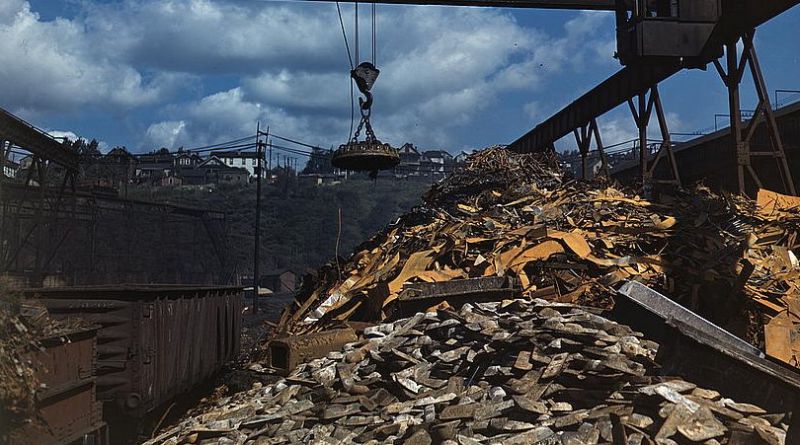The theft of certain metals, specifically copper, has been the scourge of homeowners, municipalities, road departments, and public safety agencies across the nation for several years. In a report issued today by the National Insurance Crime Bureau (NICB), it suggests that metal thieves may have moved on to other kinds of activities.
In producing the report, NICB analysts reviewed a total of 27,514 insurance claims for metal thefts occurring from January 1, 2014, through December 31, 2017—98 percent of them for copper theft. The annual breakdown is as follows: 2014 (12,682), 2015 (7,995), 2016 (4,063) and 2017 (2,774). The decrease from 2014 to 2017 was 78.1 percent.
Much of the credit for these significant reductions is due to state legislatures and municipalities, working with their law enforcement agencies, to enact tough laws targeting copper and other metal thefts. Many of these laws require scrap yards and recyclers to document the transaction and obtain proof of identity to discourage thieves from trying to cash in on their crimes. All of which has increased public awareness as well.
Some states and cities have taken measures to combat metal theft, such as requiring scrap yards to check identification of any individual who sells them scrap metal, note the license plate of the vehicle used to transport the metal, maintain the information on file, pay the seller with check instead of cash, or retain the scrap metal for a designated amount of time to allow law enforcement an opportunity to identify stolen materials before it is recycled.
However, identifying stolen metal is not always possible and opposition to these laws has made it difficult to get effective measures passed in some areas. Even in areas where such laws exist, some unscrupulous scrap dealers may not abide by them and enforcement of the laws has not always been a major priority until recent years when increases in metal thefts brought more attention to the problem. Some states and local governments have increased the penalties associated with metal theft or are charging thieves with additional crimes if the theft caused damage to infrastructure or created a hazard to the public.
The top five states for metal theft claims were: Ohio (2,851), New Jersey (2,520), Pennsylvania (2,382), New York (1,927) and Illinois (1,491).
When ranked by the number of claims per 100,000 in population, the top five states are: Connecticut (32.830), New Jersey (27.982), Ohio (24.454), Rhode Island (23.970) and Delaware (21.207).
The top five Core Based Statistical Areas (CBSAs) were: New York-Newark-Jersey City, NY-NJ-PA (1,938), Philadelphia-Camden-Wilmington, PA-NJ-DE-MD (1,731), Chicago-Naperville-Elgin, IL-IN-WI (1,246), Baltimore-Columbia-Towson, MD (810) and Cleveland-Elyria, OH (652). A total of 2,025—or 7 percent—of metal theft claims were either located outside of a CBSA or did not provide sufficient information to be included in a CBSA.
NICB says just about any place where copper is present is at risk of theft based on the claims data reviewed, as well as anecdotal references gleaned from law enforcement and news media reporting.
Law enforcement agencies across the country and around the globe started seeing increased numbers of thefts of metals such as copper, bronze, brass, and aluminum in the years leading up to the economic crisis from 2008 – 2009. Copper prices were at record highs, increasing the attractiveness of the metal as a target for theft. Thieves have been willing to go to almost any length to obtain the metal.
They have stripped sheets of metal from building rooftops, stolen memorial decorations from cemeteries, ripped apart air conditioners for the copper coils within and stripped homes and buildings of wiring and piping. Construction sites are frequent victims because metal is often left on-site unguarded and relatively unsecured. Farm equipment such as irrigation pipes and fixtures are also targeted.
The thieves can endanger the safety of themselves and those in the surrounding community, and weaken the infrastructure vital to our everyday lives. Unoccupied buildings have exploded due to gas lines being stolen. Stretches of highway have been left dark and tornado warning sirens have been rendered inoperable due to wiring being stolen. Thieves have removed wiring from traffic and railway signals and even posed as utility workers in order to remove large sections of thick utility cable from the sewers beneath city streets.
Electrical substations are frequently targeted and some thieves have been electrocuted trying to steal live electrical wiring. The damage caused by such thefts is often several times the value of the metal stolen, leaving the victims with hefty repair costs which are then often passed on to insurance companies.
The U.S. Department of Energy has estimated that metal theft costs U.S. businesses around $1 billion a year.

